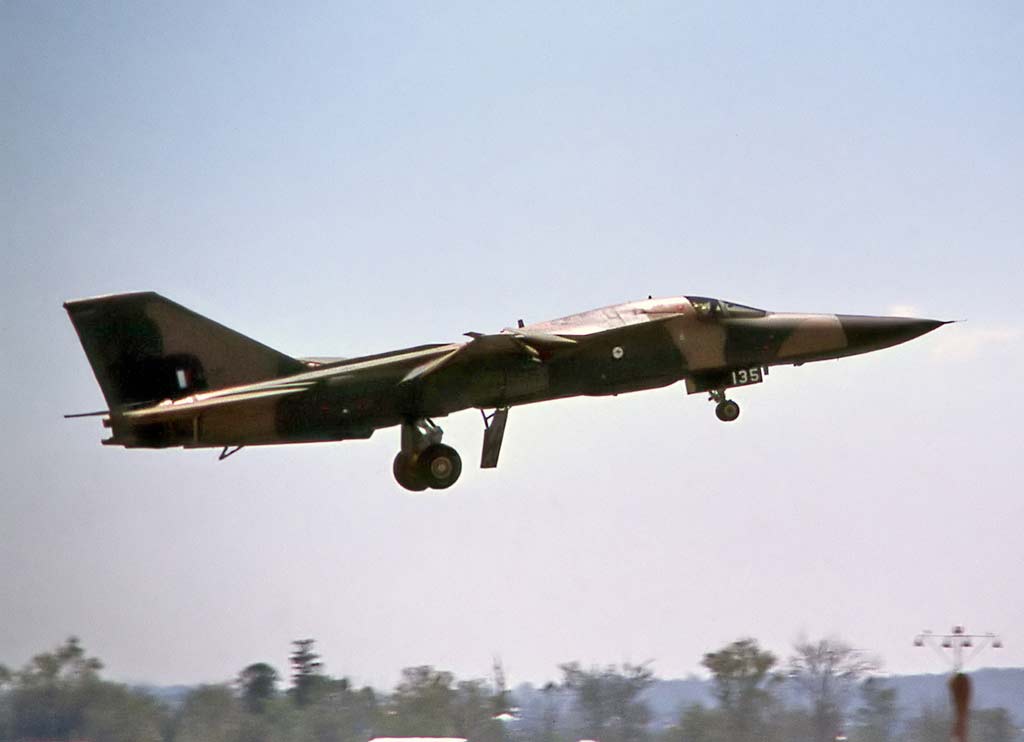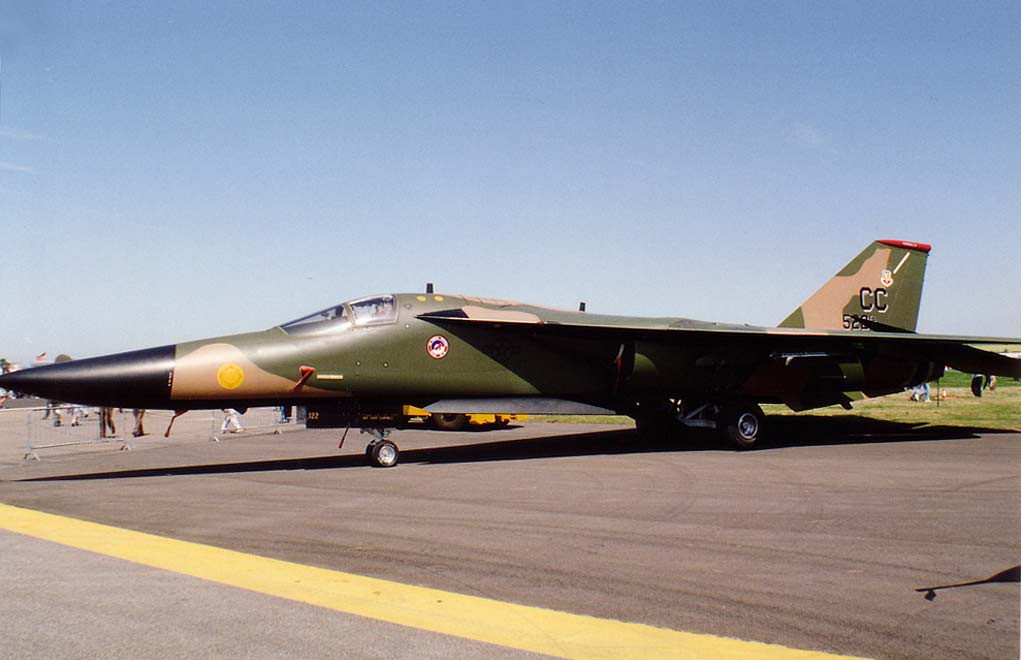The F-111 Aardvark, a revolutionary tactical strike aircraft, was known for its variable-sweep wings, supersonic speed, and terrain-following radar.
In brief
The General Dynamics F-111 Aardvark was an innovative tactical strike aircraft, embodying several technological firsts, including variable-geometry wings and afterburning turbofan engines. Entering service in the 1960s, it was designed for high-speed, low-altitude penetration of enemy defenses, carrying significant payloads over long distances. The F-111 featured a sophisticated terrain-following radar and was one of the first aircraft to implement an automated terrain-following flight control system, enabling it to fly at low levels in all weather conditions. Its design allowed for a range of over 2,500 miles without refueling, and it could carry conventional and nuclear weapons. The F-111 demonstrated remarkable versatility and effectiveness in various roles throughout its service life.

History of the Development of the General Dynamics F-111 Aardvark
The development of the F-111 Aardvark was initiated in the late 1950s when the United States Air Force (USAF) and the Navy sought a modern aircraft capable of delivering nuclear and conventional ordnance with high accuracy. The need was for a versatile platform that could perform interdiction, tactical strike, and reconnaissance missions. The program, known as TFX (Tactical Fighter Experimental), aimed to fulfill both services’ needs with a common design, leading to the F-111’s inception.
The F-111 first flew on December 21, 1964, amid various challenges, including inter-service requirements and technical complexities. Its development was marked by groundbreaking advances in aerodynamics, propulsion, and avionics, setting the foundation for future generations of combat aircraft. While the F-111 initially faced operational difficulties, subsequent upgrades and modifications refined its capabilities, making it a formidable asset in the USAF’s arsenal.
Design of the General Dynamics F-111 Aardvark
The F-111 Aardvark’s design was revolutionary, featuring variable-sweep wings that allowed the aircraft to optimize performance across a wide range of speeds and mission profiles. The aircraft was powered by two Pratt & Whitney TF30 turbofan engines, enabling supersonic speeds exceeding Mach 2.2. Its sophisticated terrain-following radar (TFR) system allowed for low-level, high-speed flight in all weather conditions, significantly enhancing its survivability in hostile environments.
The F-111 was designed with a crew of two in a side-by-side cockpit, providing improved communication and workload sharing. The aircraft’s avionics suite was state-of-the-art, with integrated navigation and weapon delivery systems. One of the F-111’s unique features was its escape capsule, which enclosed the entire cockpit, offering unprecedented crew safety.
Performance of the General Dynamics F-111 Aardvark
The F-111’s performance was exceptional, with a range exceeding 2,500 miles and a payload capacity of up to 31,500 pounds, depending on the variant. Its ability to conduct precise, high-speed strikes in adverse weather set a new standard for tactical strike aircraft. The F-111 could operate at altitudes below 200 feet due to its terrain-following radar, making it a challenging target for enemy air defenses.
In comparison to its contemporaries like the F-4 Phantom II, the F-111 offered greater speed, range, and payload capacity, although at higher operational costs and complexity. Its versatility and effectiveness were proven in various military engagements, where it demonstrated its superior bombing accuracy and operational flexibility.
Variants of the General Dynamics F-111 Aardvark
The F-111 family included several variants, each designed for specific missions:
- F-111A/E: The initial versions used by the USAF, optimized for tactical strike roles.
- F-111F: Featured improved engines and avionics, including Pave Tack laser designators.
- F-111D: Incorporated new avionics with more advanced digital flight-control systems.
- EF-111A Raven: An electronic warfare variant equipped for standoff jamming.
Each variant contributed to the F-111’s adaptability across a wide range of operational scenarios.

Military Use and Combat of the General Dynamics F-111 Aardvark
The F-111 Aardvark saw extensive combat use, particularly in the Vietnam War, where it conducted strategic bombing, close air support, and electronic warfare missions. Its capabilities were further demonstrated during Operation El Dorado Canyon in Libya and the Gulf War, where it performed deep-strike missions, showcasing its long-range, all-weather, and precision-strike capabilities. The F-111’s effectiveness in these conflicts underscored its strategic value in modern air warfare, proving its worth in complex combat environments.
The General Dynamics F-111 Aardvark was a landmark in aviation history, combining innovative technologies and operational versatility. Its legacy endures in the lessons it provided in aircraft design, particularly in variable-geometry wings and low-level, high-speed flight. The F-111’s contributions to tactical air power remain influential, underscoring its role as a pivotal platform in the evolution of modern military aviation.
Back to the Bombers section.